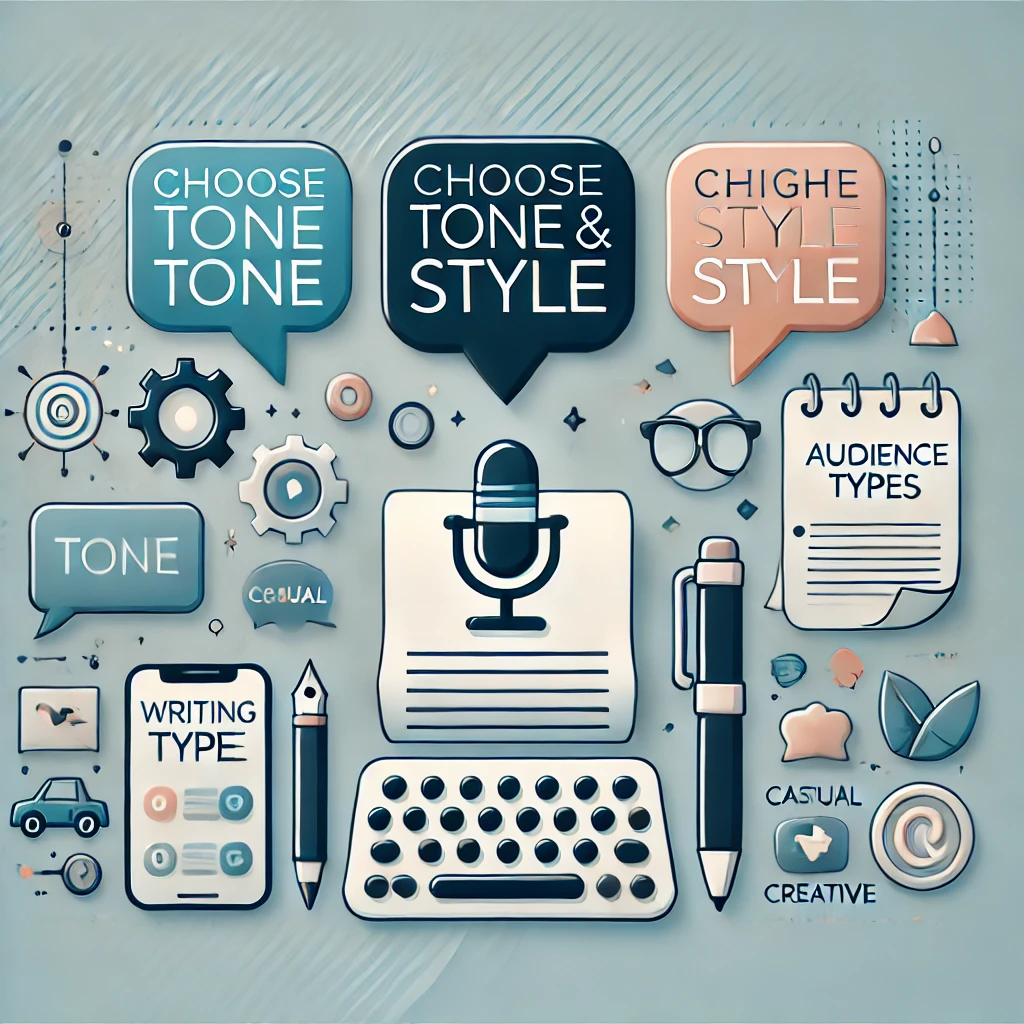How to Select the Right Tone for Your Blog
Here are some examples of different tones you can use based on your blog’s purpose and audience:

4.1. Friendly and Conversational Tone
A friendly, conversational tone is ideal for lifestyle, personal, and entertainment blogs. This tone builds a personal connection with the reader and makes your content feel approachable.
- Example:
- "Hey there! Ever wondered how to make your morning coffee even better? Let’s dive into some easy tips!"
4.2. Professional and Authoritative Tone
For blogs focused on business, marketing, or education, a professional tone conveys expertise and trustworthiness. This tone is more formal and focuses on providing value through reliable information.
- Example:
- "In today’s digital landscape, understanding SEO best practices is essential for any business looking to increase its online visibility."
4.3. Humorous and Engaging Tone
If your blog aims to entertain, a humorous tone can make your content stand out. This tone keeps readers entertained while delivering your message in a fun and light-hearted way.
- Example:
- "Ever tried baking a cake and ended up with something resembling a brick? Don’t worry, we’ve all been there—here’s how to avoid that next time!"
4.4. Empathetic and Supportive Tone
An empathetic tone is perfect for blogs that offer advice, personal development, or mental health support. This tone shows that you understand your readers’ challenges and are there to offer help and encouragement.
- Example:
- "If you’re feeling overwhelmed with life right now, remember that you’re not alone. Let’s explore some simple steps to regain control."
5. Choosing the Right Writing Style
While the tone conveys the mood, style determines how you deliver your message. Here’s how to match the writing style with your tone and purpose:
5.1. Simple and Clear Style
For informative or educational blogs, a simple, clear style works best. Focus on delivering information in a way that’s easy to understand, using short paragraphs, bullet points, and headings.
- Example:
- "To boost your blog traffic, start by optimizing your posts for SEO. Use relevant keywords in your titles and meta descriptions."
5.2. Descriptive and Storytelling Style
A storytelling style adds a personal touch and keeps readers engaged. This style is great for lifestyle or personal blogs, as it allows you to share experiences and connect with your readers emotionally.
- Example:
- "Last summer, I took a spontaneous trip to the coast. What I thought would be a quiet getaway turned into one of the best adventures of my life."
5.3. Engaging and Interactive Style
For entertainment or humor blogs, an engaging and interactive style invites readers to join the conversation. Use questions, direct address, and humor to make your content lively and fun.
- Example:
- "Let’s be real—who doesn’t love a good Netflix binge on a rainy day? Here are five shows you need to check out this weekend!"
6. Maintaining Consistency Across Your Blog
Once you’ve established your tone and style, it’s important to stay consistent throughout your blog. Consistency helps build a strong brand identity and ensures that readers know what to expect from your content. Whether you’re writing a how-to guide or a personal story, keeping your tone and style uniform creates a cohesive reading experience.
Conclusion: Choosing the Best Tone and Style for Your Blog
Choosing the right tone and style is key to creating engaging, relevant, and impactful blog content. Start by determining your blog’s purpose and understanding your audience, then select the tone and style that best aligns with those factors. Whether it’s friendly and conversational or professional and authoritative, matching your tone and style to your audience’s expectations will make your blog more effective and successful.